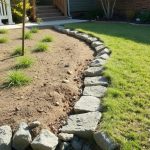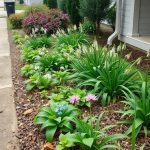If you’re looking to tackle gutter drainage issues while adding a splash of creativity to your space, you’ve come to the right place! Here are 23 rain gutter drainage ideas that are practical, stylish, and sure to keep your property in tip-top shape. Let’s check them out!
Gutter Extensions for Better Flow

Gutter extensions are a smart way to improve the drainage around your home. In the image, you can see a downspout that leads away from the house, directing rainwater safely into a drainage area.
This setup helps prevent water from pooling near the foundation, which is essential for maintaining the integrity of your home. By extending the downspout, you can direct water further away from your property.
It’s not just about aesthetics; it’s about functionality too. When rain hits, the extensions ensure that all that water flows smoothly, minimizing the risk of erosion and damage.
Consider using flexible extensions that can be easily adjusted based on your yard’s layout. This way, you can customize how water is directed, making sure it goes where you want it to.
Dry Wells for Stormwater Management
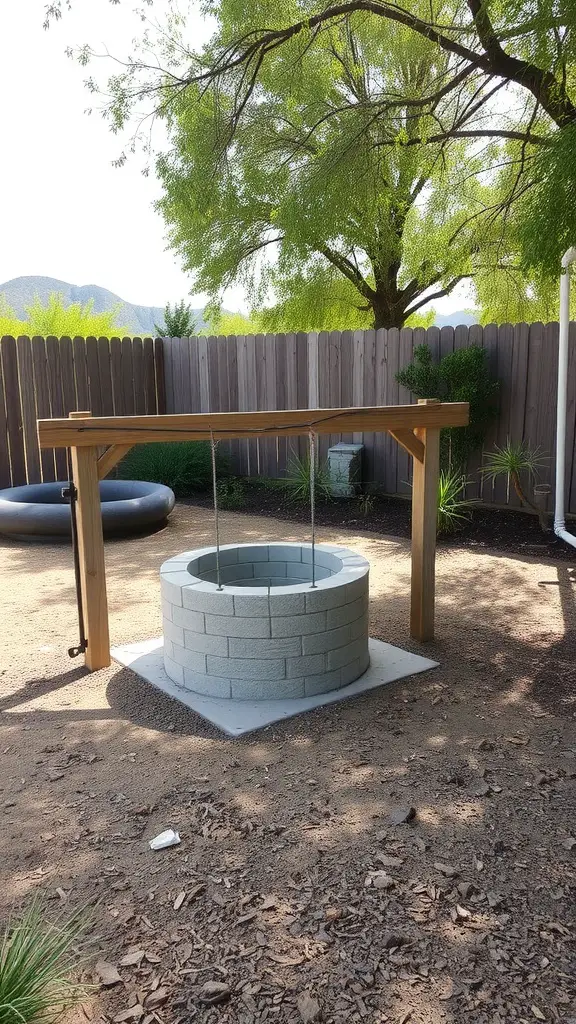
Dry wells are an effective way to manage stormwater and help keep your yard dry. They work by collecting excess rainwater from gutters and letting it drain slowly into the ground. This method reduces flooding and minimizes erosion in your garden.
The image shows a well-constructed dry well, featuring a circular stone structure topped with a wooden frame. It stands out in the yard, blending functionality with style. This setup is not only practical but also adds a unique element to your landscape.
Choosing the right location for your dry well is essential. Make sure it is away from your home’s foundation and in a spot where water tends to collect. Properly installed dry wells can be a long-term solution to effective stormwater management.
Permeable Paving Solutions
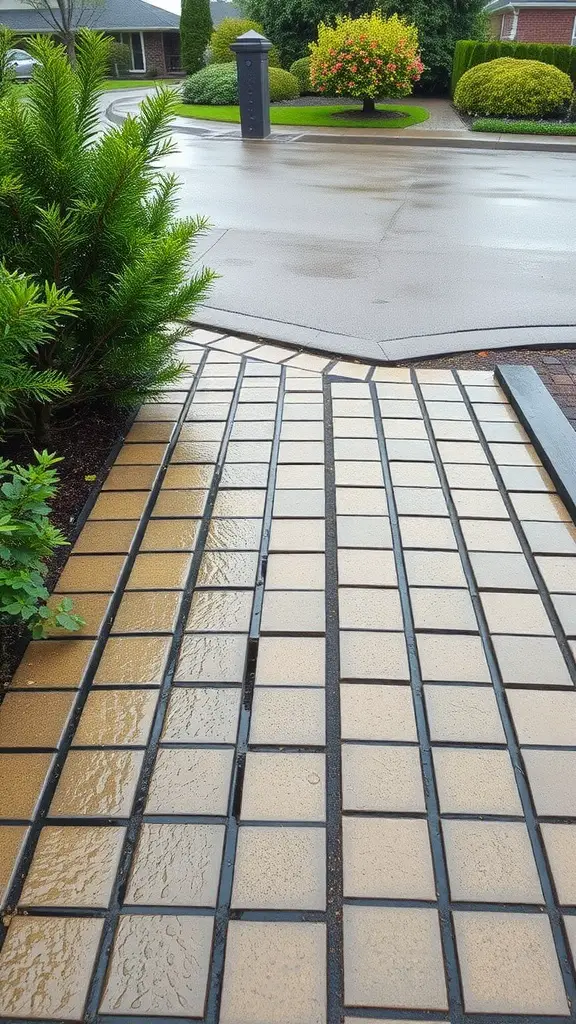
Permeable paving is a smart choice for managing rainwater efficiently. The image shows a stylish pathway made of permeable pavers. These pavers allow rainwater to seep through, reducing runoff and promoting drainage.
The design features alternating colors and patterns, which not only look great but also serve a functional purpose. It helps keep the area dry during and after rain, making it a practical option for any home.
Incorporating permeable paving into your landscape can minimize pooling and erosion. It creates a seamless connection between your outdoor space and nature. Plus, the style can complement various architectural designs, enhancing the overall aesthetic.
Whether you’re considering a driveway, walkway, or patio, permeable options are worth exploring. They provide an eco-friendly solution while adding charm to your property.
Rain Barrel Collection Systems
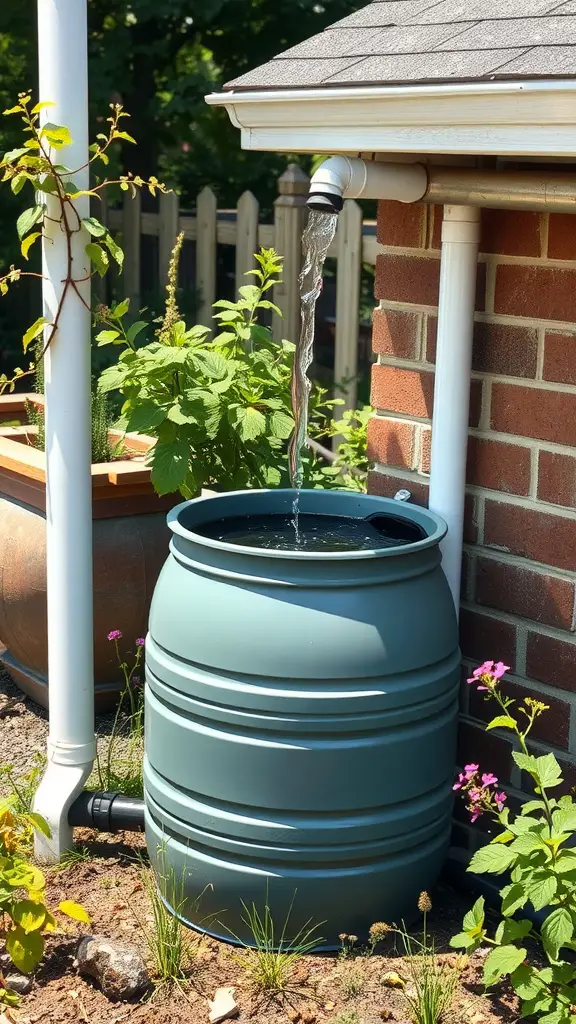
Rain barrel collection systems are a great way to make the most of your rainwater. The image shows a stylish, green rain barrel positioned beneath a downspout. Water flows neatly from the downspout into the barrel, ready for use.
This setup not only helps conserve water but also reduces runoff that can lead to erosion and other issues. The barrel is placed among vibrant flowers and greenery, adding a touch of charm to the garden.
Using a rain barrel can provide you with free water for your plants, especially during dry spells. It’s eco-friendly, easy to install, and can save you money on your water bill!
Swales for Natural Drainage
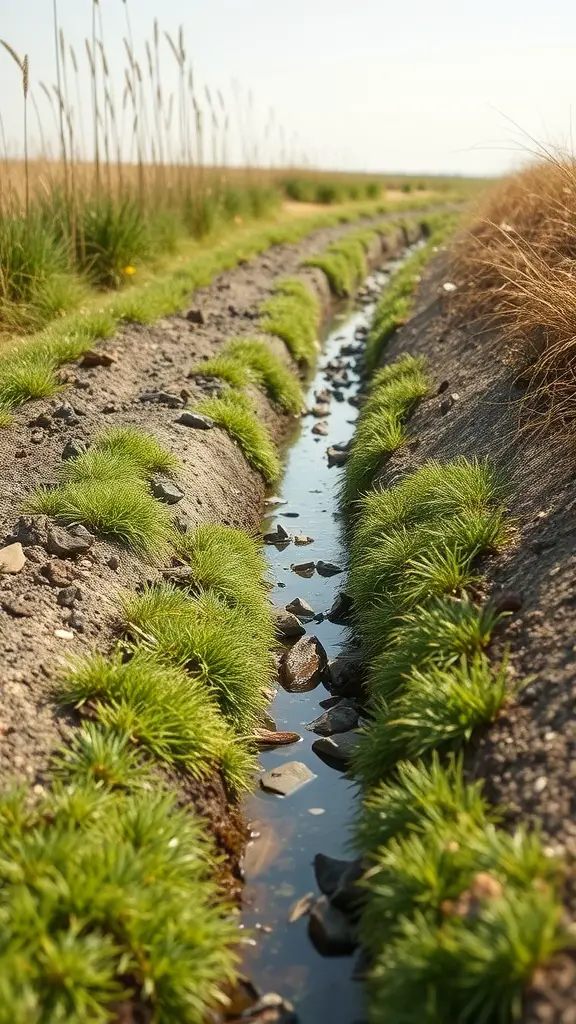
Swales are a great way to manage water flow naturally. They act as shallow ditches that help direct rainwater away from your home and into your garden or landscaping.
The image shows a well-maintained swale, lined with vibrant grass and rocky edges. This design not only captures rainwater but also promotes drainage, preventing water from pooling in unwanted areas.
Using swales can enhance the beauty of your yard while providing a practical solution for drainage issues. By collecting water, they nourish plants and improve soil health.
Swales can be customized to fit any landscape. Consider planting native grasses and flowers in the swale to make it visually appealing. This approach adds character to your yard while benefiting the environment.
French Drains to Divert Water

French drains are an effective way to handle excess water in your yard. They help to redirect runoff away from your home, preventing flooding and water damage.
In the image, you can see a trench filled with rocks and water flowing through it. This setup is typical for a French drain system. The rocks allow for proper drainage while filtering out sediment. It’s a practical solution to keep your yard dry.
By installing a French drain, you create a channel for water to flow safely into a designated area. This can protect your foundation and keep your garden healthy. Remember to plan the slope correctly so that water flows away from your house.
Overall, French drains are easy to maintain and can be a great DIY project. Just make sure to check them regularly to keep them clear of debris!
Creative Downspout Gardens
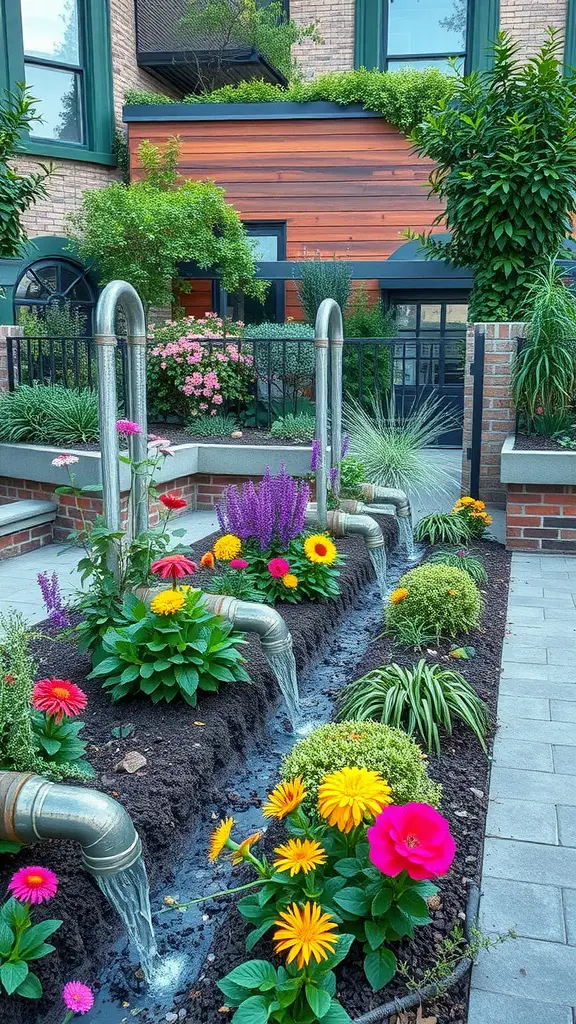
Creating a downspout garden can be a fun and unique way to add charm to your outdoor space. The image shows a vibrant garden where water flows through metal pipes, leading to a flourishing bed of colorful flowers. This design not only utilizes rainwater effectively but also enhances the beauty of your yard.
The flowers, with their bright yellows, pinks, and purples, create an eye-catching display. This setup allows you to transform what is often considered a utilitarian aspect of home design into an artistic focal point. By directing downspout drainage into a garden, you can enjoy the benefits of natural watering while showcasing your creativity.
Consider incorporating different plant types that thrive in your climate. This could include perennials for lasting color or annuals for seasonal variety. The key is to choose plants that can handle the moisture without becoming too waterlogged. With a bit of planning and an eye for aesthetics, your downspout garden can truly stand out.
Rain Chain Installations
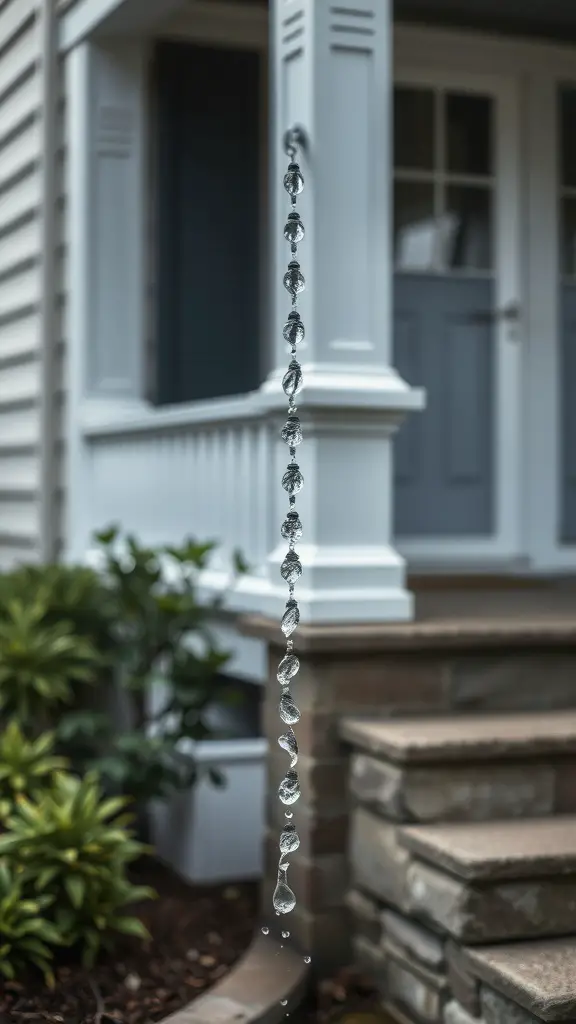
Rain chains are a beautiful alternative to traditional downspouts. They allow rainwater to flow down in a graceful manner, enhancing the aesthetic appeal of your home.
The image shows a lovely rain chain that features leaf-shaped links, creating a visual connection to nature. Instead of simply guiding water away, it adds a decorative touch to your space.
Installing a rain chain is simple. Start by removing your old downspout and replacing it with the chain. Make sure it directs the water into a garden bed or rain barrel to make the most of the collected water.
Not only do rain chains look great, but they also create a soothing sound as water flows through them. This can turn a rainy day into a pleasant experience. Pair them with some greenery around the base for a striking natural look!
Stormwater Management Ponds
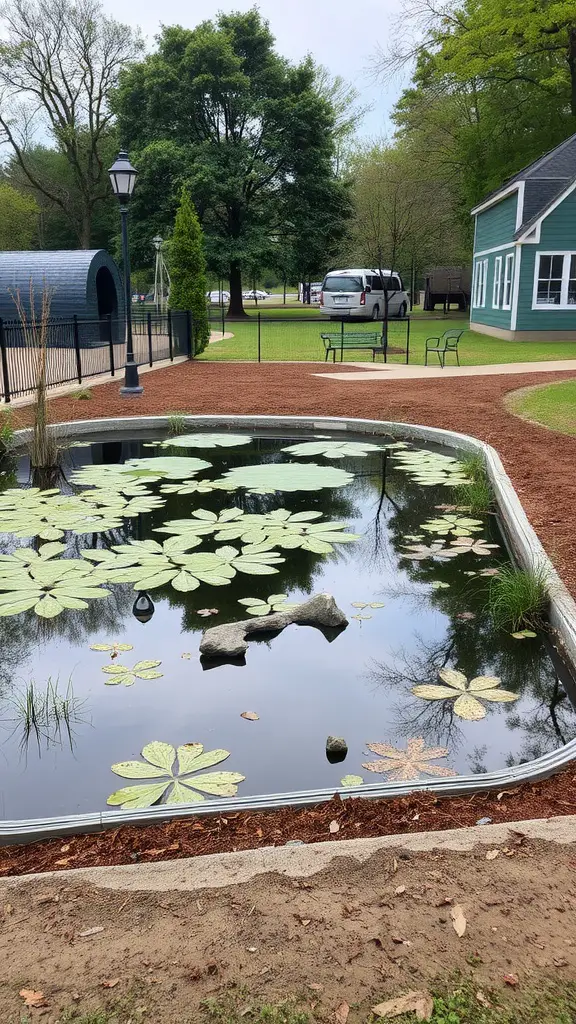
Stormwater management ponds play a key role in controlling runoff while enhancing the landscape. The image above shows a serene pond surrounded by lush greenery, which serves as a perfect example. The clear water reflects the sky and the surrounding trees, creating a tranquil atmosphere.
This pond is designed to capture rainwater, allowing it to slowly seep into the ground. This helps reduce flooding and prevents erosion in nearby areas. Additionally, the aquatic plants like the large lily pads not only beautify the space but also provide habitats for local wildlife.
Incorporating elements like this pond in your drainage plans can lead to both practical benefits and aesthetic improvements in your yard or community. It’s a simple yet effective way to manage stormwater while enjoying the natural beauty around us.
Gutter Screens to Prevent Clogs
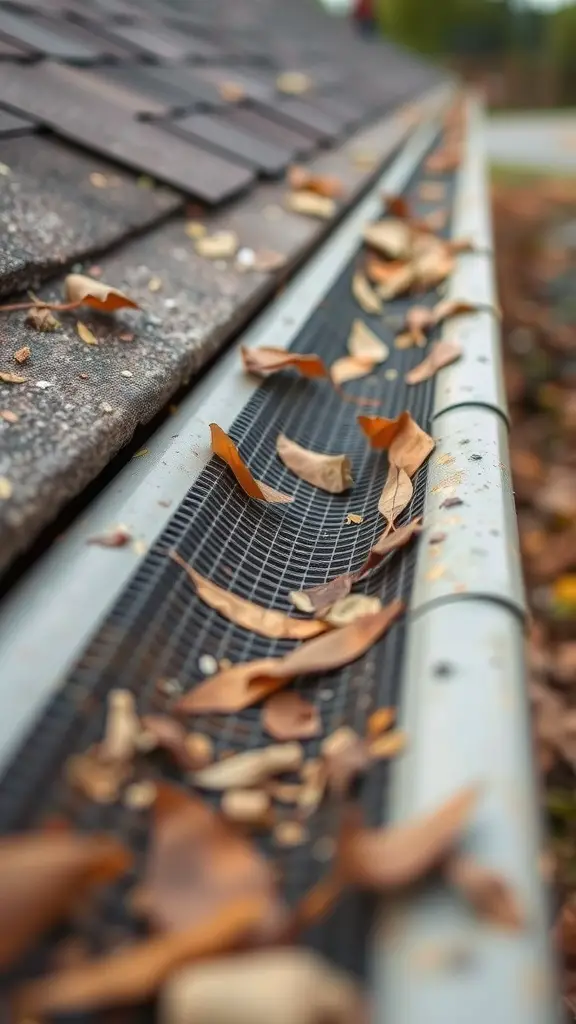
Gutter screens are a smart way to keep your gutters clear. The image shows a gutter with a screen that has caught some fallen leaves. This setup helps prevent debris from clogging the drainage, allowing rainwater to flow freely.
Installing gutter screens can save you time and effort. They act as a barrier, stopping leaves and twigs from entering the gutters while letting water through. This means less frequent cleanings and fewer repairs in the long run.
There are different types of screens available. Some fit directly onto the gutter, while others can be installed on top of it. Choose one that suits your home and budget. Remember, keeping your gutters clear is essential for effective drainage and avoiding water damage to your home.
Landscape Grading for Proper Drainage
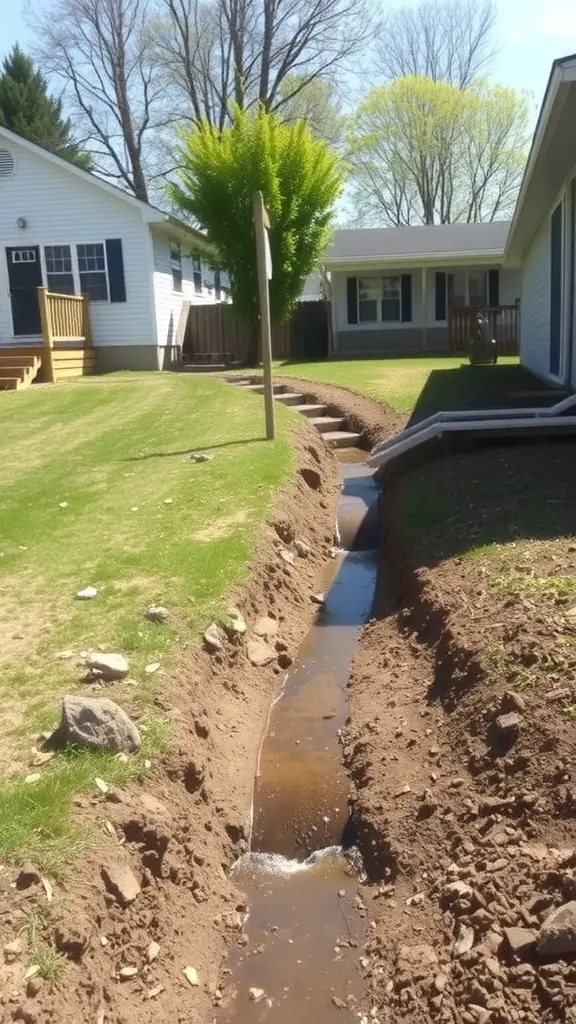
Proper landscape grading is key to managing rainwater efficiently. This image shows a system designed to direct water away from homes. The channel dug into the ground serves as a pathway for runoff, helping to prevent pooling and potential flooding in yards.
Notice how the slope leads the water away from the houses. This grading creates a natural flow that is essential for effective drainage. The grassy areas on either side of the drainage channel still offer a pleasant aesthetic while being functional at the same time.
When planning your own drainage system, think about the layout of your yard. The goal is to create a slope that encourages water to flow toward designated drainage areas, rather than toward your home’s foundation. Simple adjustments in elevation can make a big difference in how rainwater moves through your landscape.
Rainwater Harvesting Systems
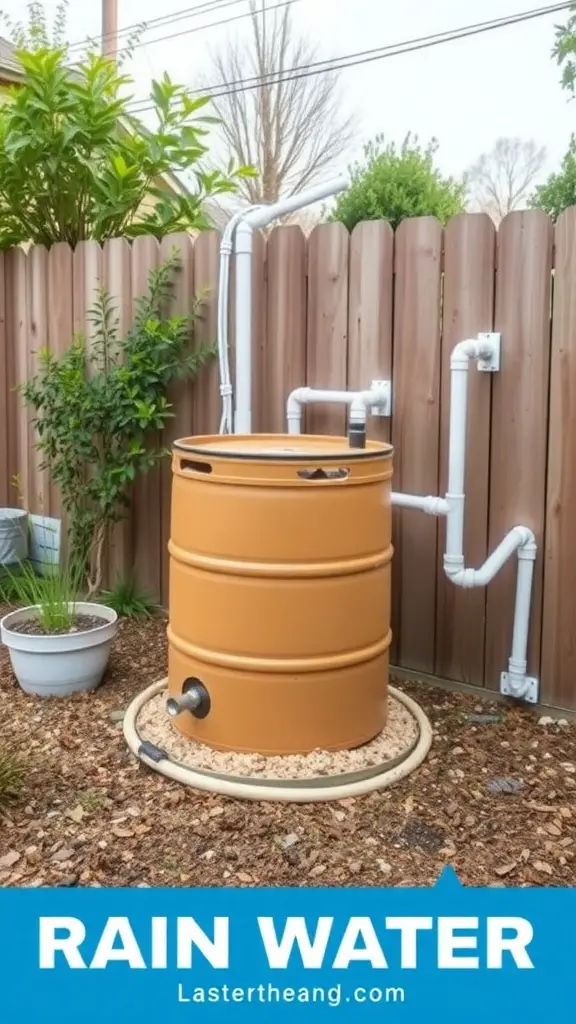
Rainwater harvesting systems are a smart way to collect and use rainwater for various purposes. In the image, you see a beautifully arranged rain barrel set up in a garden. This barrel captures rainwater from the roof and channels it through pipes, making it easy to water plants or even use for household cleaning.
The brown barrel stands out against the greenery, showcasing how effective and appealing these systems can be. The use of PVC pipes to guide the rainwater is practical and keeps your garden tidy. By collecting rainwater, homeowners can make the most of natural resources while reducing water bills.
This system not only promotes sustainability but also contributes to better garden health by providing plants with a natural water source. Setting up a rainwater harvesting system can be a rewarding project that benefits both you and the environment.
Bioswales for Environmental Impact

Bioswales are a fantastic way to manage stormwater while adding beauty to your landscape. The image shows a well-designed bioswale filled with rocks and plants. This setup allows rainwater to flow through, naturally filtering contaminants and reducing runoff.
In the picture, you can see vibrant flowers and grasses that not only beautify the area but also support local wildlife. The combination of rocks and plants in the bioswale helps slow down water movement, giving it time to soak into the ground.
Implementing bioswales is a win-win. They enhance the visual appeal of a property and play a vital role in promoting environmental health. By capturing rainwater, they reduce the strain on drainage systems and help recharge groundwater supplies.
Innovative Drainage Planters
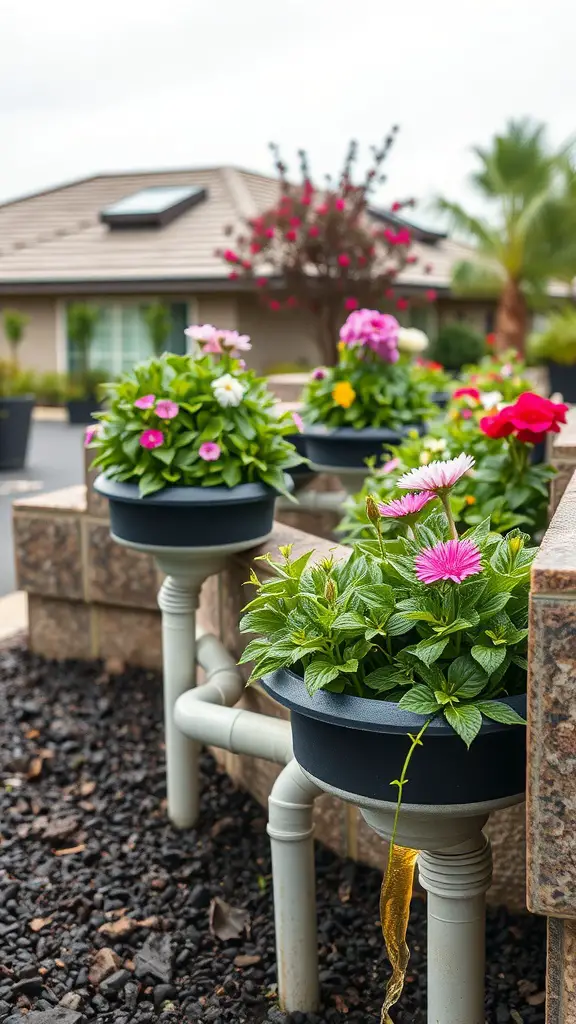
Transforming rain gutters into planters is a clever way to handle drainage while bringing life to your outdoor space. The image shows a series of colorful planters made from repurposed gutters, filled with vibrant flowers. This creative approach not only keeps excess water at bay but also adds a unique touch to your garden.
Each planter is neatly arranged and connected by pipes, showcasing an efficient drainage system. This setup allows you to enjoy beautiful blooms while ensuring that rainwater flows away from your home’s foundation. It’s a practical solution that merges functionality with aesthetics.
Adding such planters can enhance your yard’s look and create a charming focal point. You can choose flowers that bloom at different times, ensuring your garden stays lively throughout the seasons. So, consider this fun idea to make the most of your rain gutters!
Gutter Underground Drainage Piping
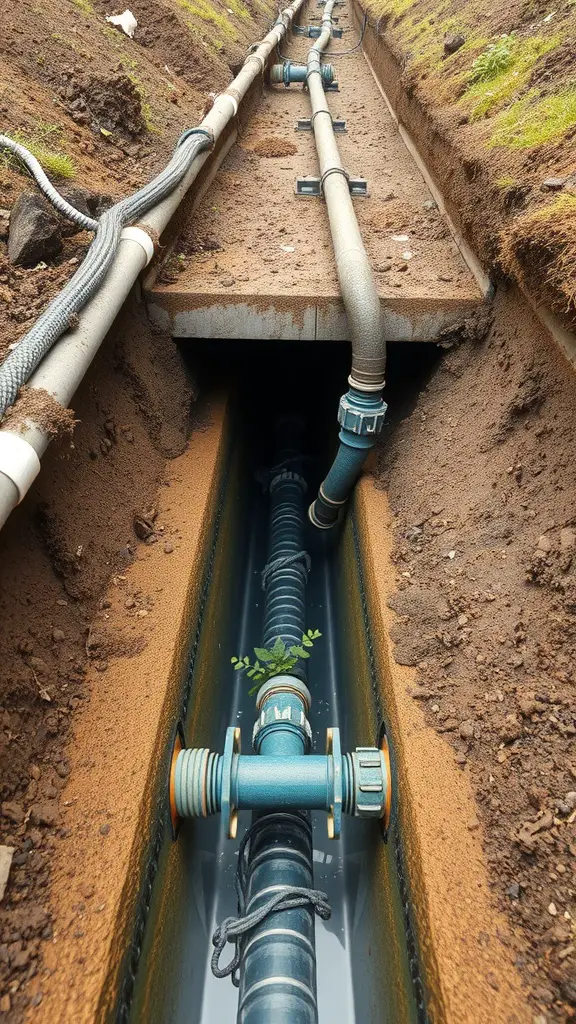
When you think of rain gutters, you might picture water flowing freely off your roof. But where does all that water go? This is where underground drainage piping comes into play. The image shows a neatly laid system of pipes, designed to channel rainwater safely away from your home.
Underground drainage helps prevent water from pooling around your foundation. This not only protects your property but also reduces the risk of flooding. The setup in the image features sturdy pipes, ensuring durability and efficient water flow.
By installing a system like this, you’re making a smart choice for your home. It keeps the landscape looking tidy and reduces the chances of water damage over time. Plus, less visible drainage means you can enjoy your yard without unsightly pipes getting in the way!
A bonus of underground drainage is that it can improve overall landscaping. With proper installation, you can direct water to garden beds or even rain gardens, promoting healthy plant growth.

